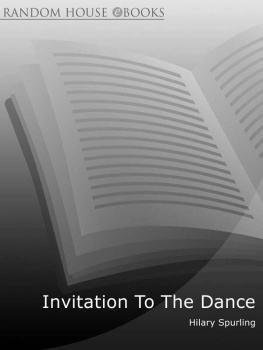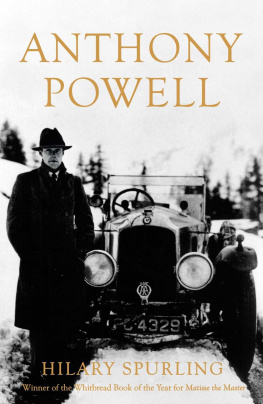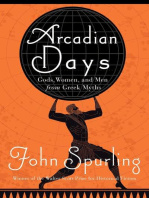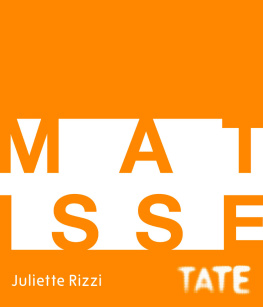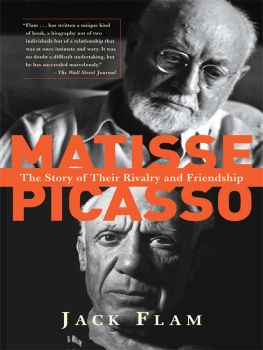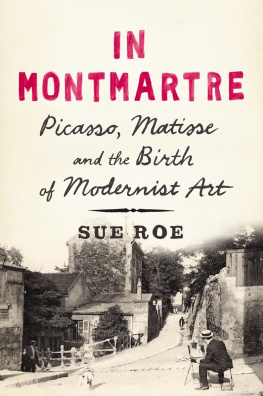Hilary Spurling - Matisse the Master
Here you can read online Hilary Spurling - Matisse the Master full text of the book (entire story) in english for free. Download pdf and epub, get meaning, cover and reviews about this ebook. year: 2017, publisher: Penguin Books Ltd, genre: Non-fiction. Description of the work, (preface) as well as reviews are available. Best literature library LitArk.com created for fans of good reading and offers a wide selection of genres:
Romance novel
Science fiction
Adventure
Detective
Science
History
Home and family
Prose
Art
Politics
Computer
Non-fiction
Religion
Business
Children
Humor
Choose a favorite category and find really read worthwhile books. Enjoy immersion in the world of imagination, feel the emotions of the characters or learn something new for yourself, make an fascinating discovery.
- Book:Matisse the Master
- Author:
- Publisher:Penguin Books Ltd
- Genre:
- Year:2017
- Rating:5 / 5
- Favourites:Add to favourites
- Your mark:
- 100
- 1
- 2
- 3
- 4
- 5
Matisse the Master: summary, description and annotation
We offer to read an annotation, description, summary or preface (depends on what the author of the book "Matisse the Master" wrote himself). If you haven't found the necessary information about the book — write in the comments, we will try to find it.
Matisse the Master — read online for free the complete book (whole text) full work
Below is the text of the book, divided by pages. System saving the place of the last page read, allows you to conveniently read the book "Matisse the Master" online for free, without having to search again every time where you left off. Put a bookmark, and you can go to the page where you finished reading at any time.
Font size:
Interval:
Bookmark:



UK | USA | Canada | Ireland | Australia
India | New Zealand | South Africa
Penguin Books is part of the Penguin Random House group of companies whose addresses can be found at global.penguinrandomhouse.com

Copyright 2005 by Hilary Spurling
Companion volume to the authors: The unknown Matisse.
1. Matisse, Henri, 18691954. 2. ArtistsFranceBiography. I. Title: Life of Henri Matisse, the conquest of colour, 19091954. II. Spurling, Hilary. Unknown Matisse. III. Title.
ISBN: 978-0-241-98405-5
Hilary Spurling was born in England and educated at Somerville College, Oxford University. She has been theatre critic and literary editor of The Spectator and a book reviewer for The Observer and the Daily Telegraph, and she has written biographies of Ivy Compton-Burnett and Paul Scott. The first volume of her biography of Henri Matisse, The Unknown Matisse, was an Editors Choice book of The New York Times. Since its publication, Ms. Spurling has lectured extensively on Matisse and has originated and written the main catalogue essay for an exhibition about his art and his textiles at the Royal Academy, London (spring 2005), and the Metropolitan Museum of Art, New York (summer 2005).

discover more stories like this at Penguin.co.uk
Ivy: The Life of Ivy Compton-Burnett
Invitation to the Dance: A Guide to Anthony Powells Dance to the Music of Time
Elinor Fettiplaces Receipt Book
Paul Scott: A Life of the Author of the Raj Quartet
Paper Spirits: Collage Portraits by Vladimir Sulyagin
The Unknown Matisse: A Life of Henri Matisse: The Early Years, 18691908
La Grande Thrse: The Scandal of the Century
The Girl from the Fiction Department: A Portrait of Sonia Orwell
One of the oddest things about Henri Matisse is that he has had no biography until now, fifty years after his death. The work has been left to speak for itself, which should have meant that the life recedes into the background, remaining insignificant and largely unknown. In practice, something more like the opposite has happened. The blank pages of Matisses life have been filled in over the past half century with half-truths, misconceptions and downright fabrications, many of them now so deeply embedded in art-historical culture that they seriously distort the ways in which people look at his paintings.
If my story were ever to be written down truthfully from start to finish , Matisse wrote in retrospect, it would amaze everyone. It has certainly amazed me. The popular image of Matisse bears little relation to the character who slowly emerged from my ten years research. Key facts about the life confidently accepted as self-evident in previous accounts have frequently turned out to be nothing of the sort. Interpretations of the work based on these supposed facts need to be reexamined. This biography attempts to realign Matisses life and work within a more accurate framework that contradicts at crucial points the myths too often uncritically accepted as historical reality.
Biography has long been rated a poor relation of art history, but, in this case, a strict application of the rules of evidence is long overdue. I will instance two standard assumptions, both false, both of which have restricted or undermined understanding of Matisses work. The first concerns his supposedly exploitative relationship with the women he painted. The proposition that the painter automatically slept with his models has become an unquestioned tenet of Matisse scholarship, taken for granted long before it was first explicitly stated (by J. D. Flam in his groundbreaking Matisse: The Man and His Art in 1986). I began by taking it for granted myself, but no first-hand testimony or documentation has ever been produced to back up this notion, nor have I been able to find a shred of evidence to support it. On the contrary, rigorous biographical scrutiny points to very different conclusions. It is not my role to deal with the sexual, moral and political theories posthumously erected on this basic misconception, only to point out how strongly it has coloured attitudes to Matisses work, especially to the paintings he produced in Nice in the 1920s and 30s, which remain to this day largely misrepresented and neglected.
My second example concerns a further set of baseless but damaging allegations about Matisses behaviour in World War II. The popular image of the painter indulging himself among the fleshpots of Nice in wartime will not stand up to even cursory inspection. For one thing, the whole area lay under imminent threat of invasion from Italian forces in 1940, and again from Allied armies in 194344. Matisse spent many months under bombardment in or just behind a military zone on pre-alert. His situation was complicated in January 1941 (a few weeks after his seventy-first birthday) by an emergency operation he was not expected to survive, which put him at grave risk for the next twelve months, and left him an invalid for the rest of his life. Rumours that he had dealings with the Nazi regime in France are based on a misreading both of the historical context and of the painters personal circumstances. These and many comparable blurrings or falsifications are documented in detail in the relevant sections of my text and endnotes. All of them crucially modified reactions to Matisse as a painter. The longstanding, at one time almost universal, dismissal of one of the greatest artists of the twentieth century as essentially decorative and superficial is based, at any rate in part, on a simplistic response to the poise, clarity and radiant colour of Matisses work that fails to take account of the apprehensive and at times anguished emotional sensibility from which it sprang.
My attempt to clear away prejudice and preconception could not have been fully documented without drawing on the extraordinarily rich and revealing correspondence preserved in the Matisse Archive in Paris. Matisse himself was a vivid, frank and lucid correspondent, who for the greater part of his long life set aside an hour or more each day for keeping in contact by post with family and friends. Only a minute portion of these letters (principally those to and from three fellow artists, Pierre Bonnard, Charles Camoin and Andr Rouveyre; the collector Sergei Shchukin; and the Dominicans, Father M. A. Couturier and Brother L. B. Rayssiguier, during the construction of the chapel in Vence) has so far been published. The family correspondence remains an unrivalled and as yet largely untapped resource. Matisse wrote regularly to his wife, sending letters that amounted to a detailed daily journal whenever the couple was separated for any length of time, up to and including his visits to Tahiti and the United States in the early 1930s. The Paris Archive also includes his letters to and from other members of the family, principally his daughter Marguerite Matisse Duthuit, as well as the many letters exchanged by members of the family. A further thirty years of intimate and moving correspondence between Matisse and his son Pierre has recently been lodged with the Pierre Matisse Papers in the Pierpont Morgan Library in New York.
Font size:
Interval:
Bookmark:
Similar books «Matisse the Master»
Look at similar books to Matisse the Master. We have selected literature similar in name and meaning in the hope of providing readers with more options to find new, interesting, not yet read works.
Discussion, reviews of the book Matisse the Master and just readers' own opinions. Leave your comments, write what you think about the work, its meaning or the main characters. Specify what exactly you liked and what you didn't like, and why you think so.


